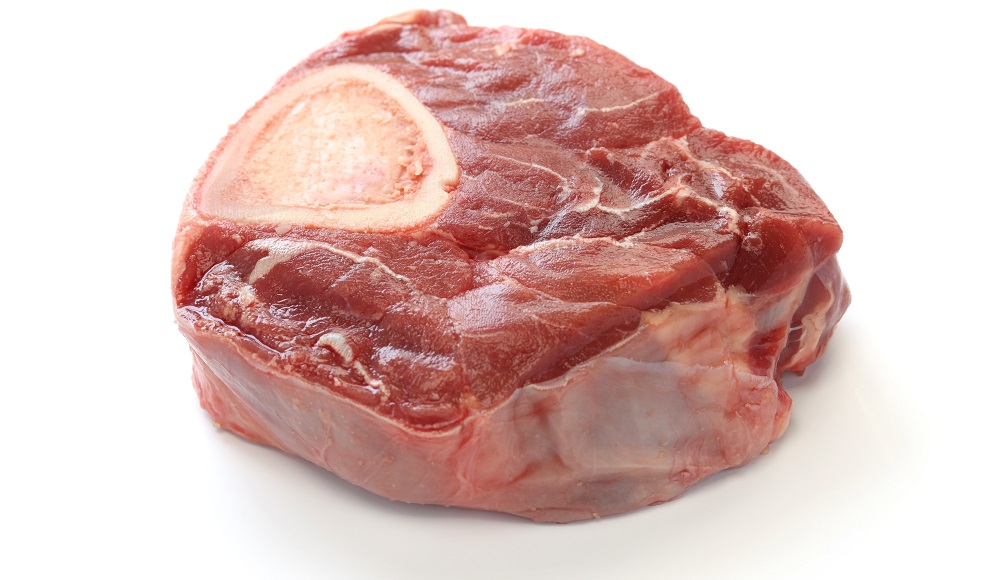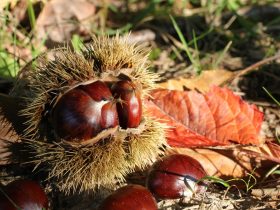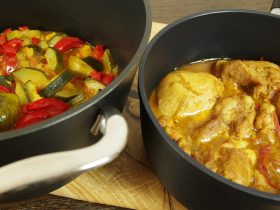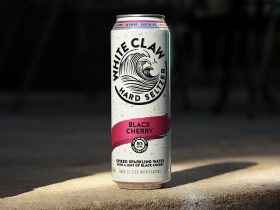Veal meat is the meat from calves that have been specifically bred for the purpose of being slaughtered at an earlier age than adult cows.
Most often, male calves of bulls are used for the production of veal meat in the event that they are not used for breeding, as this allows the farmers to make back their investment despite the otherwise lack of profitability in raising male cows1.
Flavor-wise, veal presents a much less fatty and meatier flavor in comparison to regular beef, though its texture is not impacted by this difference in composition due to the young age at which the calf is slaughtered2.
What Fat Percentage is Veal?
As veal usually comes from a younger cow, and statistically is most likely to be one of the male gender, veal possesses a significantly lower fat percentage than most other kinds of meat derived from cows.
Broken down into equal components, veal, on average, can have up to 15% fat per 100 grams, more than half of the estimated 30% fat content percentage for most forms of ground beef.

While the particular musculature and section of the cow can also play a large part in the fat content that is present after the meat undergoes grinding, these numbers act as a general guideline.
Apart from the cut of meat that was used for grinding, the particular body composition of the veal-calf can also directly translate to the fat percentage that is found later in the butchering process.
That said, if the butcher takes the time and care to remove fatty sections of the meat, it is possible to lower this percentage even further.
What are the Types of Veal?
The various types of veal available for purchase usually depend on the age of the veal-calf when it is slaughtered, the sort of feed that was given to the veal-calf and the location where the veal-calf was raised prior to slaughtering.
Among these are the so-called “bob veal”, which are slaughtered within a month of being born. Compared to other cows used for meat, bob veal provides a very small amount of product as the livestock have not yet had the chance to grow, often totaling at 60 pounds, organs and bones included.
Milk-fed or otherwise known as white veal are calves that were specifically given a diet rich in fortified milk and nutrient-rich feed in order to improve their taste, appearance and texture as much as possible. Milk-fed veal is the most common sort of veal in the western world owing to its more humane mode of livestock-raising as well as its significantly better quality compared to other types of veal.
Red or grain-fed veal, on the other hand, are not fed any sort of fortified or enhanced food in any way, and are instead raised in much the same way most calves would be. Upon slaughtering within five months, the calves usually present a darker and tougher quality meat in comparison to milk-fed veal.
What is the Nutrient Profile of Veal?
As veal is considered a lean meat with a considerably low sodium content, veal is considered a healthier alternative to regular beef.
At approximately 200 kilocalories per 100 grams, veal is among one of the leanest meats available for commercial purchase. In much the same volume of veal, one can find up to 21 grams of protein, or approximately the same amount of protein as four hard-boiled eggs.
Cholesterol wise, veal is somewhat high, though this is because it is considered a red meat and as such contains up to 55 milligrams of cholesterol per 100 grams. Its sodium content is low, being only 116 milligrams per the same amount of weight.
All in all, veal is an excellent alternative to those wishing to watch both their weight and their blood-pressure, so long as it is consumed in moderation, much like all foods.
How is Veal Cooked?
Veal is most often utilized in dishes from European and Mediterranean regions, in particular the countries of France and Italy, where they are sliced into cutlets and breaded before frying.
Other uses for veal in these cuisines are in the form of fillet steaks, roasted with the bone still present, and baked into a thin loaf of bread stuffed with other ingredients.
Apart from the meat’s varied uses, the bones of the veal are often purchased to use in soups and stocks, as they contain excellent flavor that is only released under high heat for long periods of time.
Less common though far more expensive is the organ meat of a veal-calf. Prized as the most valuable and flavorful type of offal, veal organ meat often sells for a high price.
In the chemistry sector, the stomach acids of veal-calves are used in order to harvest a group of enzymes called rennet, of which is mostly used in the cheese-making industry to stimulate hardening and processing of milk products.
What Dishes is Veal Used in?
While veal can be used in much the same way other types of beef are used, certain dishes in particular call for veal specifically to be cooked in their recipes. Among the most famous of these are veal picatta, or beaten and breaded veal, ragout, the famous German schnitzel and cotoletta, which is quite similar to veal picatta in visual and cooking process.
As veal is more expensive than regular beef, it is often purchased for these very dishes, as the cheaper beef can act as a perfectly suitable replacement in many other non-veal-focused recipes.
What Ingredients Go with Veal?
Much like beef, veal pairs best with some sort of carbohydrate as a base and an acidic sauce served alongside it for taste.
Examples of these are lemon and rice, or spaetzle and mushrooms, or even potato and carrots.
On the drink side of things, it is said that veal is best paired with white wine, as the sweeter flavor opposed to red wine best compliments veal meat.
References
1. Bennett, Jacob M. (2010). The Complete Guide to Grass-Fed Cattle: How to Raise Your Cattle on Natural Grass for Fun and Profit. Atlantic Publishing. p. 197. ISBN 9781601383808.
2. “Veal’s Journey from Farm to Food to You”. Cattlemen’s Beef Board.
3. Unknown Author. (September 2011) “Beef and Veal Nutrition Facts” United States Department of Agriculture





Hi, I'm Dom
Dom Eats was started to help other people fall in love with food. While cooking can feel intimidating, it doesn't have to be.